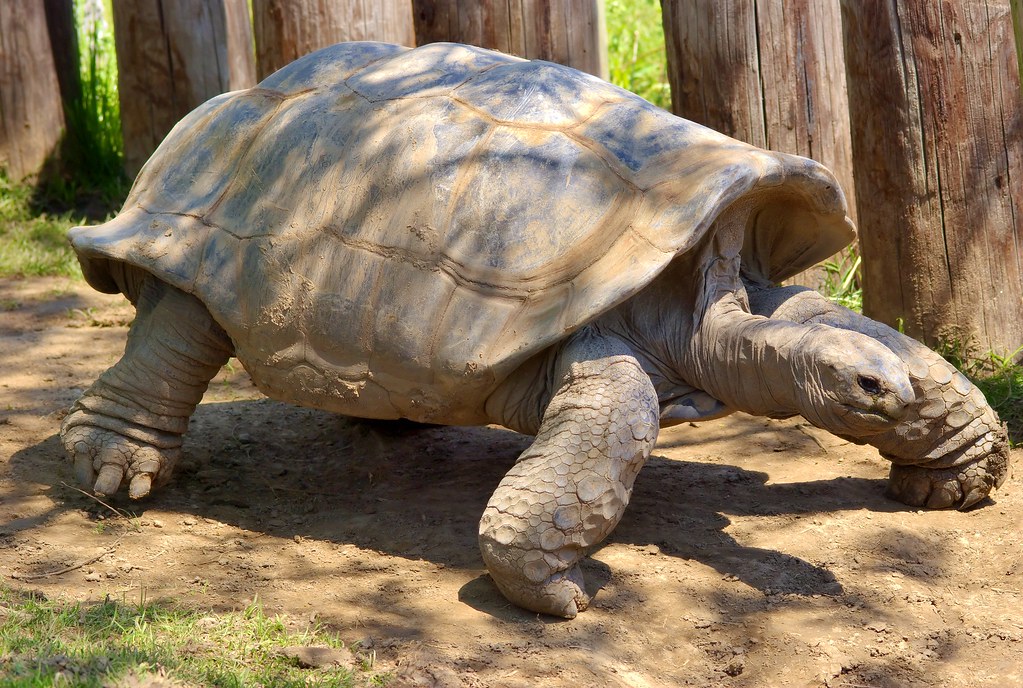Context:
For the first time in 600 years, a six-year-old project in Madagascar may result in thousands of Aldabra Giant Tortoises returning to the wild.
About Aldabra Giant Tortoise:
- The Aldabra giant tortoise ranks as the world’s second-largest land tortoise species, surpassed only by the Galapagos Giant Tortoise.
- With a remarkable lifespan of up to 150 years, this tortoise species boasts a captivating evolutionary journey.
- Endemic to the Aldabra Atoll in the Seychelles, located approximately 930 miles east of Africa and northeast of Madagascar.
- Aldabra tortoises exhibit sexual dimorphism, meaning that males and females differ in appearance.
- These tortoises originally inhabited Madagascar for 15 million years before migrating to the Seychelles about four million years ago.

Key features:
- Their habitat includes diverse environments such as scrub forests, mangrove swamps, and coastal dunes, each of which supports unique vegetation.
- Particularly prominent in grassland areas known as “platins,” where the largest tortoise populations are found.
- Primarily herbivores, they eat grasses, leaves, woody plant stems, and fruit. They occasionally indulge in small invertebrates and carrion, even eating the bodies of other dead tortoises.
- The tortoises’ grazing activities have contributed to the formation of specialized grass habitats termed “tortoise turf.”
Conservation Status:
- IUCN: Vulnerable; CITES: Appendix II.
Also Read:
The Water (Prevention and Control of Pollution) Amendment Bill

